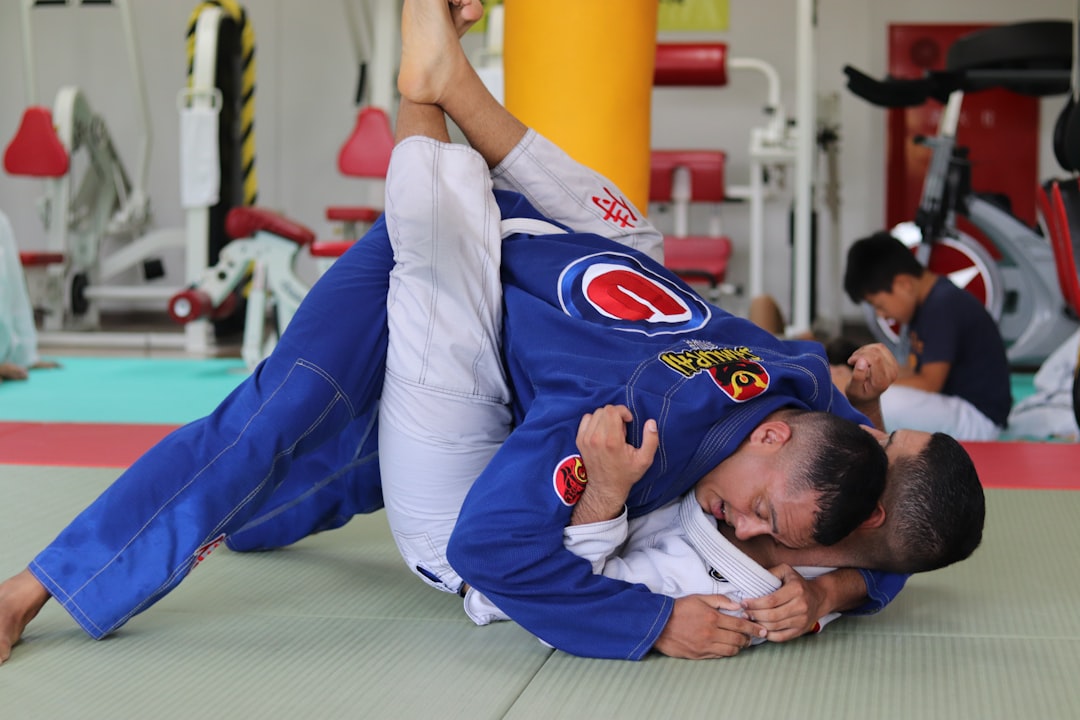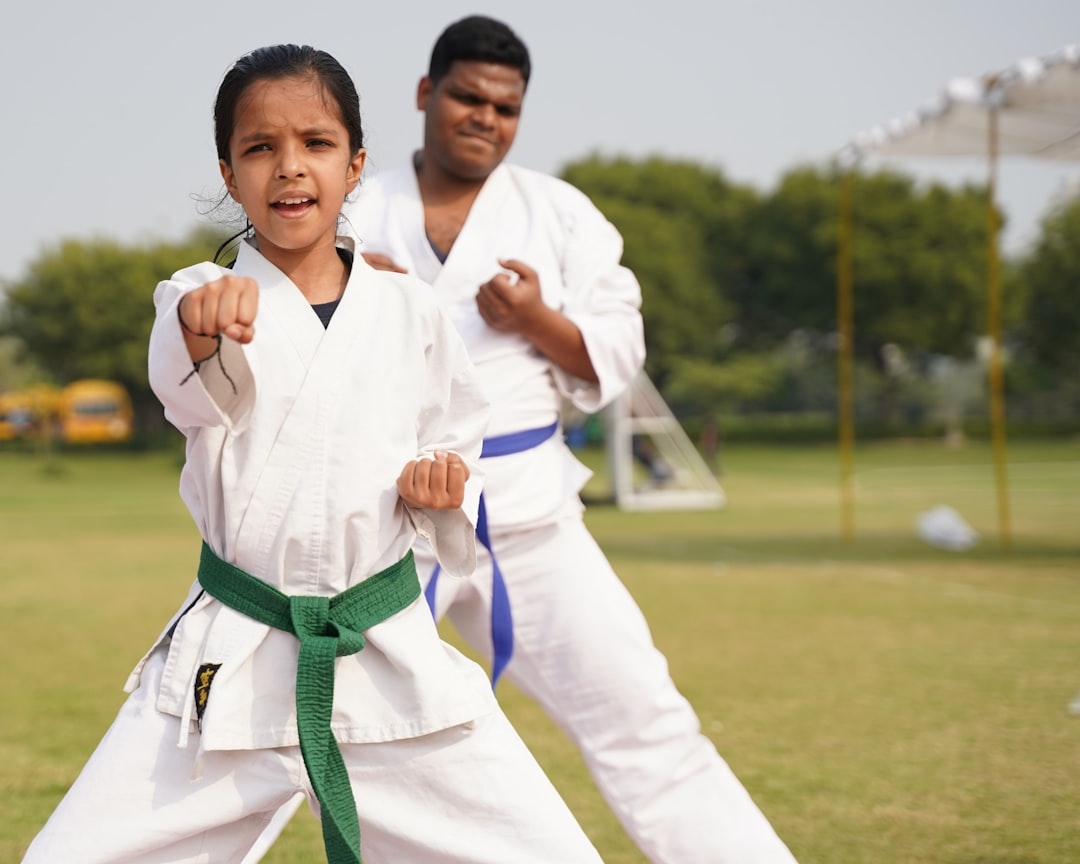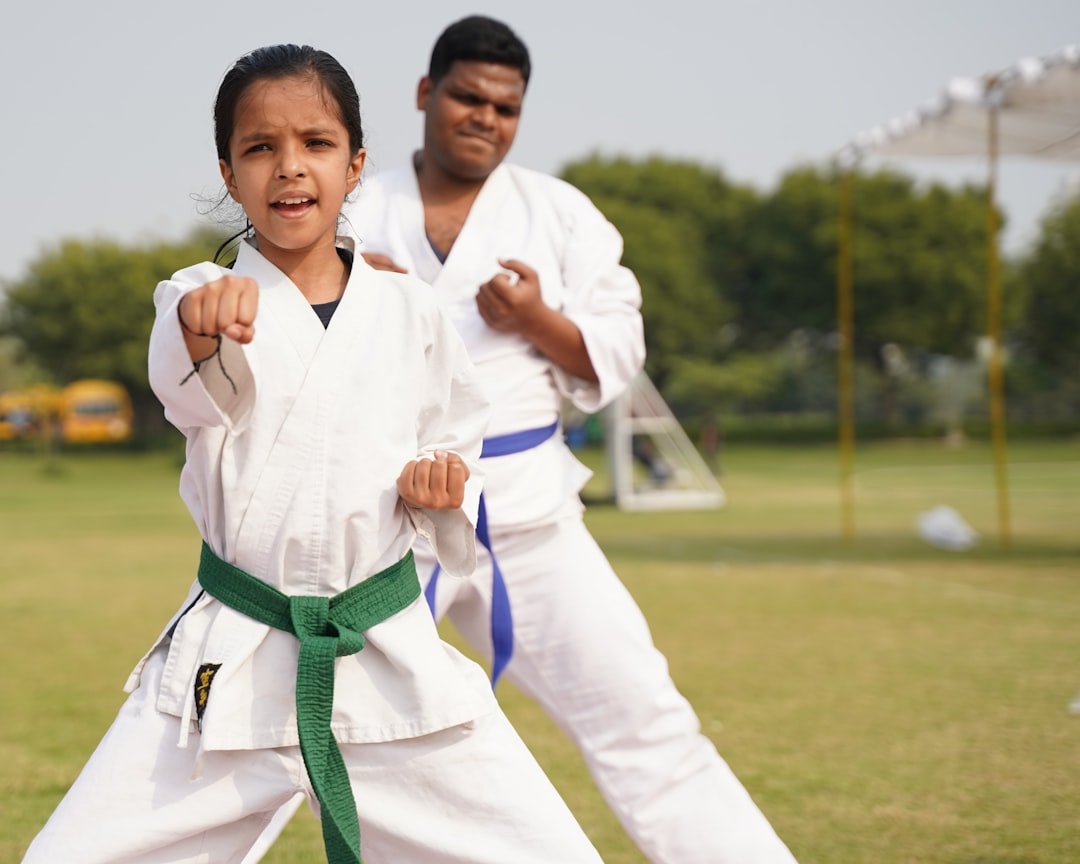To effectively practice karate at home, you need a high-quality karate uniform (gi) made of heavy cotton fabric for comfort and clarity of movement. This allows instructors to assess your form accurately during virtual training sessions. While secondhand gis can suffice, new ones offer the best fit and durability. Your practice area should be at least 6×6 feet, with a padded floor to prevent injuries from falls and enough space to execute all techniques without obstruction. A well-ventilated room with mirrors is beneficial for monitoring posture and form, which is crucial for precision in your karate practice. Investing in the right gi color that motivates you is also important as it can influence your mental state during training. Additionally, a dedicated space with protective flooring like tatami or mats is essential for safe practice. Proper lighting, preferably natural, and mirrors to reflect light and help check form are important for maintaining correct technique and ensuring a conducive environment for focused and effective home karate training.
Embark on the journey of mastering Karate within the confines of your own home with our comprehensive guide. Whether you’re a beginner or an experienced practitioner, this article will equip you with the knowledge to create a conducive training environment and a structured routine tailored to solo practice. From selecting the ideal karate uniforms to understanding the importance of specialized mats, we’ll cover all the essential equipment and space requirements necessary for effective home training. Additionally, learn how to structure your daily regimen with a focus on goal setting, balanced training schedules, and integrating mindfulness. Discover techniques, drills, and mental exercises to advance your skills and maintain motivation, ensuring progress even when training alone. With the right approach and resources, your Karate practice can flourish at home, leading to improved strength, technique, and discipline.
- Mastering Karate at Home: Essential Equipment and Space Requirements
- – Selecting Your Karate Uniforms: A Guide to Choosing the Right Gi for Training
- – Designating a Dedicated Practice Area: Tips for Creating an Effective Karate Training Space
Mastering Karate at Home: Essential Equipment and Space Requirements

Engaging in karate at home requires both the right equipment and sufficient space to practice effectively. For starters, a proper karate uniform, known as a gi, is essential for comfort and functionality during training. The gi should be made of a heavy cotton fabric that allows for ease of movement while providing enough structure to ensure the instructor can assess your form accurately. Does the gi need to be authentic or brand new? An authentic gi, preferably new, will offer the best experience as it will fit correctly and last longer. Additionally, the space you choose for practice should be clear of potential hazards, have a soft, padded floor to cushion falls, and ideally measure at least 6×6 feet to accommodate full-range movements without obstruction. Can a small area suffice for practicing karate? While it’s possible to practice in a smaller space, a larger area allows for greater movement and is more conducive to learning the full spectrum of karate techniques safely and effectively. A well-ventilated room with mirrors can also be beneficial, as they help you monitor your posture and form, ensuring precision in your movements.
– Selecting Your Karate Uniforms: A Guide to Choosing the Right Gi for Training

When embarking on a journey to master karate at home, selecting the appropriate attire is crucial for both comfort and adherence to traditional practices. Karate uniforms, known as ‘Gis,’ are essential components of the discipline, serving as a symbol of respect for the art and your training environment. The right Gi should not only reflect the purity of the martial art but also facilitate movement, allowing you to execute techniques with precision and ease. When choosing a Gi, consider its material; traditionally, heavy cotton is preferred due to its durability and breathability, which will help regulate your body temperature during intense training sessions. Additionally, ensure the fit is appropriate: not too tight so as to restrict movement, yet snug enough to maintain form while practicing. A well-fitting Gi should fall just above the wrist and knee when your arms and legs are fully extended. Are you looking for a Gi that aligns with traditional values yet accommodates modern training needs? Opt for one made from high-quality, pre-shrunk cotton that’s been specifically designed for karate practitioners. Such a Gi will offer both the respect for tradition and the functionality required for effective home training. What’s more, consider whether you prefer a traditional white color or if a different hue aligns better with your personal training space and motivation levels. The choice of color can have a psychological impact on your mindset during practice, so select a Gi that resonates with you and inspires focus and discipline.
– Designating a Dedicated Practice Area: Tips for Creating an Effective Karate Training Space

To effectively train karate at home, one of the first steps is to designate a dedicated practice area that is conducive to your martial arts routine. This space should be clear of obstructions and have enough room for you to perform kata and practicing techniques with enough space to move freely without risking injury. Ensure this area has a soft, padded flooring such as a tatami mat or exercise mats to cushion falls and landings. The quality of your training can be significantly impacted by the surface you train on; thus, it’s crucial to consider the type of flooring that will best support your movements.
Investing in a proper karate uniform, known as a gi, is essential for both functionality and focus. A well-fitted gi not only facilitates movement but also helps you embody the discipline and respect inherent to the practice of karate. The color of your gi can also affect your mindset, with white traditionally symbolizing purity and humility. Is the lighting in your training area adequate? Natural light is preferred, as it allows you to be aware of your surroundings and also helps in maintaining a positive mental state during practice. Positioning mirrors to reflect sunlight or artificial light can also enhance the space, allowing you to monitor your form and alignment for precision in your techniques. Consider these elements when setting up your training area to create an environment that fosters focus, discipline, and effective karate practice at home.
Effectively training in karate from home hinges on having the right equipment and a conducive environment. This article has outlined the key components for creating an ideal training space, including selecting your karate uniforms—a critical aspect for both comfort and technique adherence. By designating a dedicated area tailored for practice, enthusiasts can fully engage in their martial arts journey, even from the comfort of their own homes. With these guidelines in place, aspiring karateka can ensure they maintain the discipline and progress required to master this ancient art.
